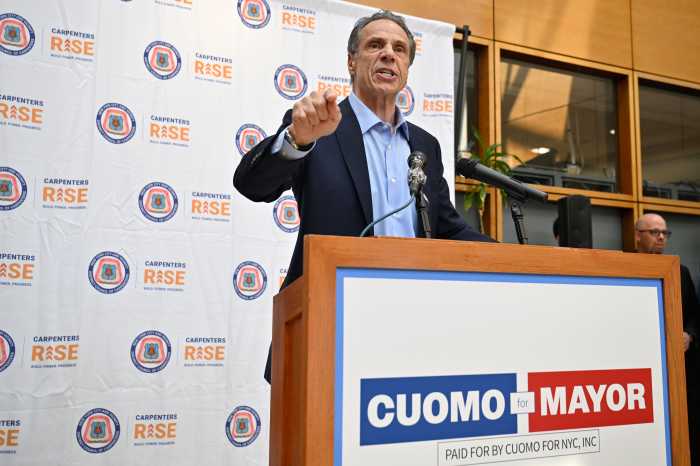
In a first-floor classroom at PS 723 in the Bronx, water from a faucet contained lead at a staggering level — nearly 6,000 times the Environmental Protection Agency’s regulatory standard for “safe” levels in water.
Those lead results at PS 723 — 87,300 parts per billion — are deeply troubling. For context: The highest level seen in Flint, Michigan, where high lead levels caused a water-contamination and public health crisis, was about 13,000 parts per billion. The EPA standard is 15 parts per billion.
The concern here can’t be minimized. Lead is toxic, and health officials say it can cause problems even at low levels, especially in children. It can damage young brains and nerves. It can lead to learning problems, behavioral issues, hearing loss, seizures, hyperactivity and more.
PS 723, which serves emotionally disturbed, autistic and intellectually disabled children, is not alone. Nearly 83 percent of city school buildings had excessive lead levels at some faucet in the building, according to city Department of Education data.
At the William E. Grady Vocational High School in Brooklyn, 101 of 359 water samples had elevated lead levels; three fixtures tested above 30,000 parts per billion. More than 20 other schools had at least one fixture with levels above 10,000. High levels of lead were found in fountains and sinks in classrooms, bathrooms, cafeterias, athletic fields, nurses’ offices and other areas.
Of course, most NYC school buildings are old, and finding some lead in the pipes is not a surprise. But the extent of the findings, both in the levels and the number of schools affected, is stunning. The problem has been exacerbated by the DOE’s insufficient public response.
The information cited here is from DOE spreadsheets, which contain every water fixture’s lead levels. The data were released on the DOE’s website on May 9 with no publicity or explanation, and aren’t easy for parents or the public to find or understand. Before releasing the spreadsheets, the DOE had provided only general statistics. Letters were sent home to parents with a school’s lead-testing specifics, and were posted to the schools’ official websites.
None of the efforts to date are enough for students, parents, health professionals and others to really understand the scope of the threat posed by lead levels in schools, or what’s being done to address the problem.
DOE officials have said the water is safe, noting that the risk is lower than data may show. That’s because in its latest testing, the DOE followed the EPA’s recommendations to let the water stand before testing it. Experts say letting the water run before testing can mask the true levels of lead. But DOE officials noted that children usually drink water that has been running and would consume less lead.
They said all fixtures with unsafe levels have been turned off and work to reduce the water’s lead content is ongoing.
While the DOE followed the guidelines in state legislation passed last year by sending letters home to parents and posting the letters to school websites, city officials should do more. A more comprehensive and user-friendly response by school and city officials is warranted. DOE should make sure its online school search functions include faucet-by-faucet lead levels, and explanations of the risks they pose. (Right now, none of that information is easily searchable.) It should publish lists of schools with the worst levels of lead, and issue clear explanations of the results and what parents need to know. The state health department should do more, too, perhaps by analyzing the city’s by-faucet data and providing resources and guidance.
City officials also should go school to school, starting with PS 723 and William E. Grady, to explain the problem. They’ve done some of that, but should do more, especially where problems are most severe. That way, they can make sure families understand the severity and how to get children tested for lead poisoning. The only definitive way to know whether a child has lead poisoning is with a blood test. Then, the city and state must make sure that when future lead testing is completed, results are published in a clear, thorough manner.
DOE officials can’t treat this lightly or bury the worst results deep in a spreadsheet. Parents and the public deserve more. We’ll start by publishing more of the key results here. City and state officials have to do the rest.































